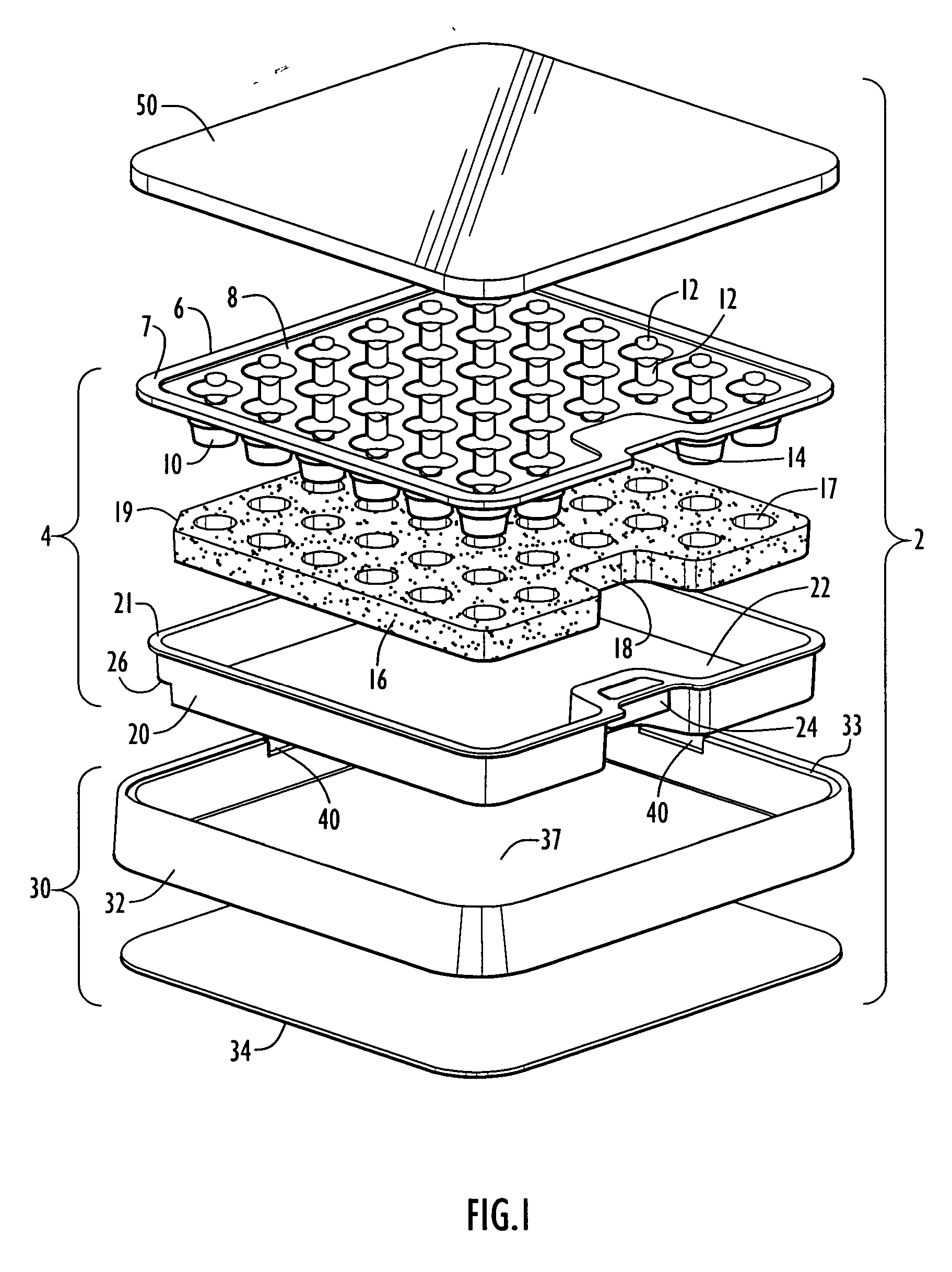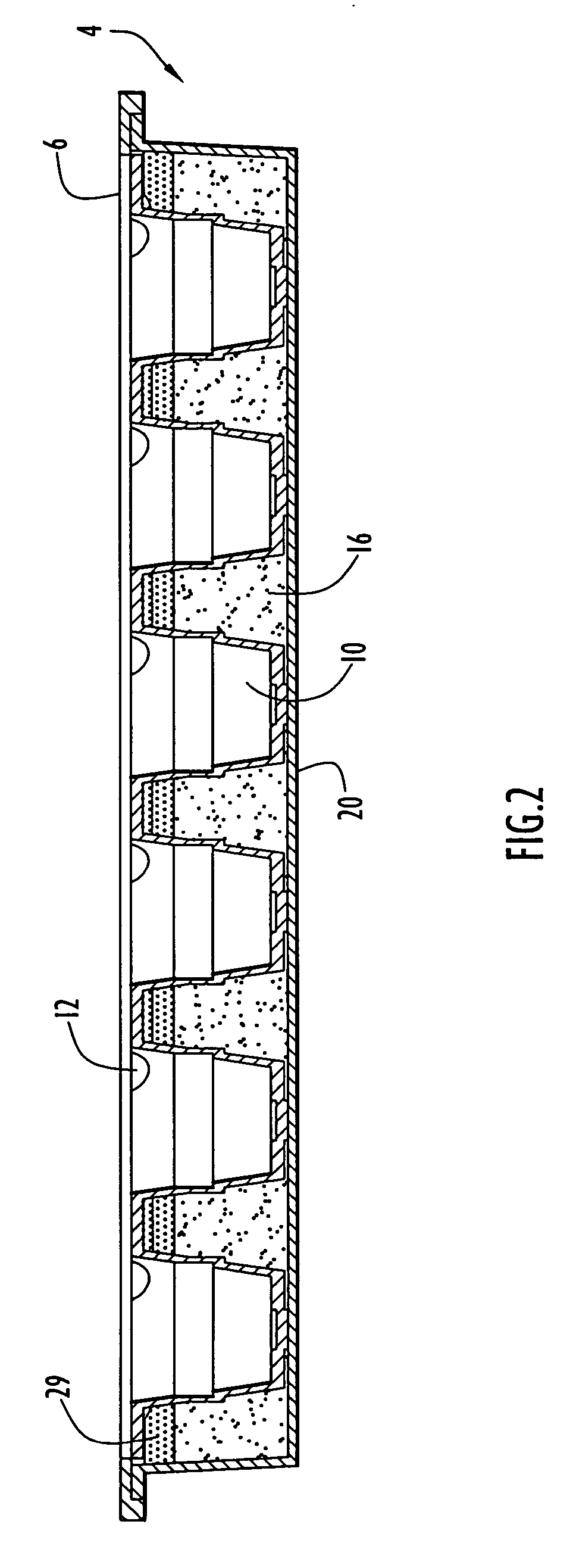Portable thermal treatment and storage units for containing readily accessible food or beverage items and methods for thermally treating food or beverage items
a technology for thermal treatment and storage units, which is applied in the field of portable units, can solve the problems of high cost of refrigeration for display to consumers, high cost of machines, and high cost of counter space or floor space, and achieves the effects of minimizing costs and labor, facilitating food and beverage items to be easily accessible, and facilitating the storage of food and beverage items
- Summary
- Abstract
- Description
- Claims
- Application Information
AI Technical Summary
Benefits of technology
Problems solved by technology
Method used
Image
Examples
Embodiment Construction
[0036] In accordance with the present invention, a portable thermal treatment and storage device or unit is provided that is capable of converting frozen or non-frozen food or beverage items into a partially frozen state and / or maintaining food or beverage items in a partially frozen or any other desired state and within a desired temperature range for a selected time period without the requirement of electrical energy.
[0037] In one embodiment of the invention, a portable refrigeration and insulation unit includes a cartridge that effectively insulates and / or refrigerates food items stored in the cartridge at desired temperatures. The cartridge includes an insulating material and / or a heat transfer material that provides effective heat transfer between portions of the cartridge and the food items stored within the cartridge so as to maintain the food items at the desired temperatures. In addition, the unit includes an outer frame or case that is configured to receive the cartridge ...
PUM
 Login to View More
Login to View More Abstract
Description
Claims
Application Information
 Login to View More
Login to View More - R&D
- Intellectual Property
- Life Sciences
- Materials
- Tech Scout
- Unparalleled Data Quality
- Higher Quality Content
- 60% Fewer Hallucinations
Browse by: Latest US Patents, China's latest patents, Technical Efficacy Thesaurus, Application Domain, Technology Topic, Popular Technical Reports.
© 2025 PatSnap. All rights reserved.Legal|Privacy policy|Modern Slavery Act Transparency Statement|Sitemap|About US| Contact US: help@patsnap.com



